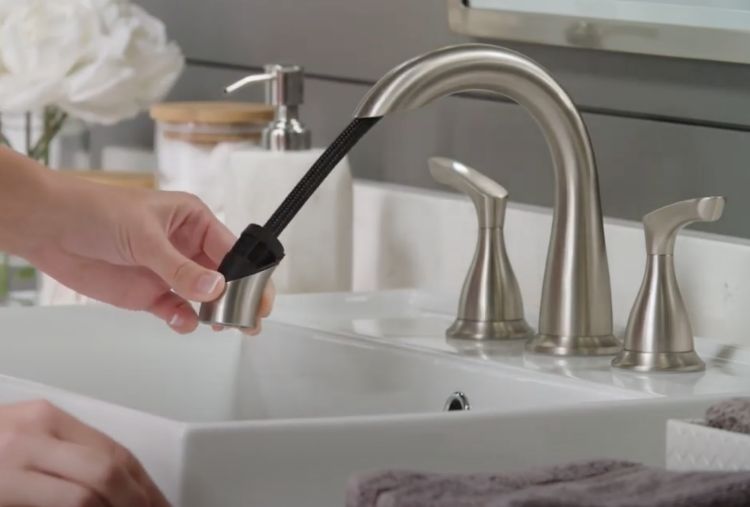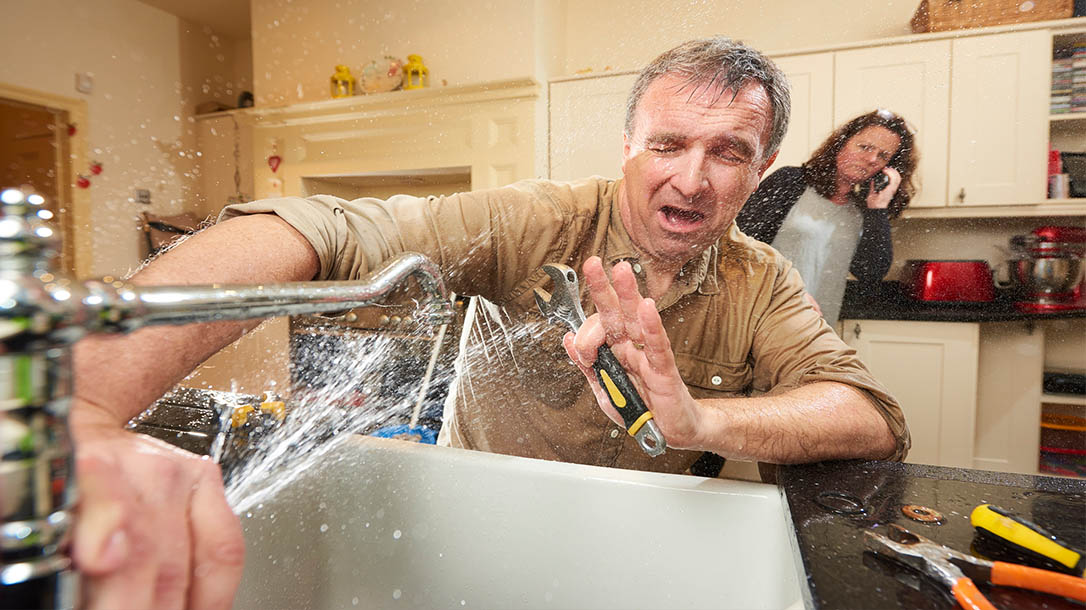The Explanations Behind Fixing a Broken Faucet
The Explanations Behind Fixing a Broken Faucet
Blog Article
Just about everyone has their private conception with regards to Water Dripping from Faucet: Why and How to Fix.

Trickling faucets may appear like a small inconvenience, yet their impact surpasses just the aggravation of the noise. From drainage to incurring unnecessary economic prices and wellness risks, disregarding a dripping faucet can cause numerous effects. In this post, we'll explore why it's vital to resolve this common home issue promptly and effectively.
Waste of Water
Environmental Impact
Dripping faucets contribute significantly to water waste. According to the Environmental Protection Agency (EPA), a solitary tap leaking at one drip per secondly can lose greater than 3,000 gallons of water annually. This not only stress water resources yet also affects ecological communities and wildlife dependent on them.
Step-by-Step Guide to Fixing a Dripping Tap
Tools Needed
Before trying to repair a leaking tap, collect the required devices, consisting of an adjustable wrench, screwdrivers, substitute parts (such as washing machines or cartridges), and plumber's tape.
Common Faucet Issues and Their Solutions
Identify the type of tap and the specific problem causing the drip. Usual problems consist of damaged washers, rusty valve seats, or damaged O-rings. Refer to manufacturer directions or online tutorials for step-by-step assistance on repair work.
Financial Expenses
Increased Water Expenses
Past the ecological influence, leaking taps can blow up water bills significantly. The built up wastage over time translates right into higher utility expenditures, which can have been stayed clear of with prompt fixings.
Possible Property Damages
In addition, long term trickling can bring about harm to components and surface areas surrounding the faucet. Water build-up can create staining, corrosion, and also structural issues if left unattended, causing added repair costs.
Health Worries
Mold And Mildew and Mildew Growth
The constant existence of dampness from a trickling faucet produces a perfect environment for mold and mildew and mold growth. These fungis not just compromise indoor air high quality yet also pose health threats, specifically for individuals with breathing problems or allergies.
Waterborne Illness
Stationary water in leaking faucets can come to be a breeding place for bacteria and other pathogens, increasing the danger of waterborne conditions. Contaminants such as Legionella germs flourish in stagnant water, possibly bring about significant diseases when consumed or breathed in.
DIY vs. Expert Repair
Benefits and drawbacks of Do It Yourself Repair Service
While some may try to take care of a leaking tap themselves, DIY repair services include their very own collection of obstacles. Without appropriate expertise and devices, DIY attempts can exacerbate the issue or lead to insufficient repairs, prolonging the trouble.
Advantages of Working With an Expert Plumber
Hiring an expert plumber makes sure that the underlying reason for the trickling tap is addressed properly. Plumbing technicians have the experience and tools to diagnose and fix faucet concerns effectively, conserving time and minimizing the danger of more damages.
Ecological Duty
Individual Payment to Preservation
Taking duty for dealing with leaking taps straightens with more comprehensive initiatives towards water conservation and environmental sustainability. Every individual's actions collectively make a significant effect on protecting priceless resources.
Lasting Living Practices
By prioritizing prompt fixings and taking on water-saving habits, individuals contribute to lasting living techniques that profit both existing and future generations.
Safety nets
Normal Upkeep Tips
To stop dripping faucets, carry out routine upkeep such as cleaning up aerators, checking for leakages, and replacing damaged parts quickly. Furthermore, consider installing water-saving devices or updating to much more efficient fixtures.
Importance of Prompt Repairs
Resolving trickling faucets as quickly as they're seen prevents more water waste and potential damage, eventually conserving both water and cash over time.
Impact on Home Value
Perception of Well-Maintained Building
Keeping a home in good condition, including dealing with maintenance issues like leaking taps, enhances its viewed worth and worth among possible buyers or renters.
Influence on Resale Value
Qualities with well-maintained plumbing fixtures, consisting of faucets, command greater resale values in the realty market. Dealing with trickling faucets can add to a positive impact during residential or commercial property evaluations and settlements.
Conclusion
Attending to a dripping tap exceeds plain comfort; it's an essential action towards conserving water, decreasing economic expenses, and safeguarding wellness and property. Whether via do it yourself repairs or professional support, doing something about it to fix leaking taps is a small yet impactful way to promote liable stewardship of resources and add to a much healthier, much more sustainable future.
How to Fix a Dripping or Leaky Faucet
A leaking faucet is one of the most common problems that homeowners encounter, but it being commonplace doesn’t make it any less annoying. The constant drip drip drip of a leaking bathtub faucet, showerhead, or sink tap can disturb your home’s serenity. Left neglected, a dripping faucet can also result in higher water bills and discoloration or mold growth in your sink or plumbing fixtures.
Fortunately, you don’t have to be a trained plumber to know how to stop a dripping faucet. With some basic tools, replacement parts, and a little patience, leaky faucet repair is a breeze. In this article, we’ll explain what causes dripping faucets and how you can fix them.
What Causes a Leaking Faucet?
Kitchen and bathroom faucets come in all manner of designs, but most involve some combination of valves, O-rings, seals, and washers. The O-ring is usually the weakest link, but any one of these pieces can wear down over time. Heat, moisture, temperature fluctuations, minerals, mold, and movement can contribute to warping and corrosion, breaking the watertight seal. This just comes with the territory of being a homeowner. Everything is always subject to wear and tear, and some component parts of your appliances and fixtures need to be replaced on occasion. At least replacement O-rings are cheap!
More rarely, dripping faucets can be a symptom of excessively high water pressure. Were this the case in your home, you would probably notice that the leak is not isolated to one faucet. Water pressure issues are harder to resolve on your own. We recommend contacting a professional plumber if you suspect your water pressure is too high.
How to Fix a Dripping Faucet
Pipe wrench or monkey wrench Allen wrench set Screwdrivers Old towel or rag Shut off the water.
Before you do anything, you need to turn off the water to keep from drenching your kitchen or bathroom. You should find a valve under the sink and against the wall. Once you’ve turned this valve, try turning the faucet on to confirm that the water source has been cut off.
If you can’t locate your local valve for the faucet you’re working on, you can always shut off the water to the house at the main valve. Of course, this will prohibit anyone from using the sinks, showers, or toilets while you’re working on the faucet that’s giving you trouble.
Plug or block the drain.
You’ll be disassembling the faucet and removing some small bits of hardware. Plug the drain with a stopper or rag to avoid the possibility of a small screw falling into your P-trap.
Take apart the faucet assembly.
There are several varieties of kitchen and bathroom faucets, each with its own manner of assembly. For detailed instructions on how to disassemble your faucet, you can refer to the fixture’s manual or contact the manufacturer. If you know whether you have a ball, disc, cartridge, or compression faucet, you can find detailed schematics online.
In general, you need to begin by removing the faucet handles. You might notice a small screw that you’ll need to remove with a screwdriver or Allen wrench. If you don’t see any visible securing hardware, it’s likely hidden under a decorative cap that can be unscrewed or popped off with flathead screwdriver.
Remove each piece methodically, consulting a schematic when necessary. Take notes or arrange the pieces in such a way to make it easier to correctly reassemble the faucet later.
Remove the cartridge.
Once you’ve removed the handles and securing hardware, you should be able to remove the valve cartridge or stem. Some cartridges will slide right out. Other faucet models will require you to loosen a nut with a pipe wrench before you can remove the valve stem.
Examine the exposed hardware.
With the cartridge or stem removed, inspect the component parts. Check the rubber O-rings for wear and tear. Also examine the seat washer for corrosion or other damage. These pieces are usually the responsible parties for a dripping faucet, but it’s worth inspecting the other component parts while you have the faucet disassembled.
Find replacement parts.
Once you’ve identified which faucet component has failed, find an identical replacement. Your local hardware store should have O-rings, seat washers, and other standard components in stock. If you have a luxury or uncommon faucet, you may have to contact the manufacturer for a replacement part.
It’s a good idea to take your old parts with you to the hardware store so you can compare them with the store’s inventory and be sure you’re purchasing the correct replacement.
Reassemble the faucet.
With your new parts in hand, reconstruct the faucet and handles. Don’t be tempted to overtighten screws or nuts. You might think this could create a better seal, but it can instead damage or bend a delicate part of the assembly and create a new problem for you.
Turn on the water and test the faucet.
The only thing left to do is test your work. Unplug the sink, turn the water back on, and try the faucet. Congratulate yourself on a job well done!
https://www.libertyhomeguard.com/how-to-fix-a-dripping-or-leaky-faucet/

I am just very enthusiastic about What Causes Leaky Faucets & How To Fix Them and I'm hoping you liked the blog posting. Don't hesitate to pause to promote this blog posting if you liked it. I take joy in your readership.
Report this page